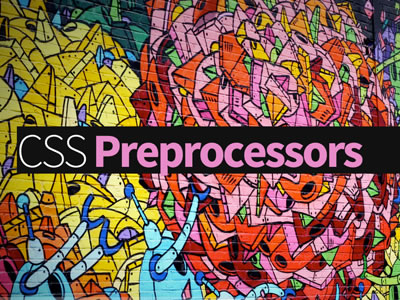Not Using CSS Preprocessors? You need to be.
Posted on January 27, 2014 at 7:28 am
CSS was both a superb innovation and a missed opportunity. Having the ability to separate the shape and the content of a webpage massively improves the method of website design. But, CSS has a few limitations. As anyone who has ever written CSS knows, for all however the most basic of web sites, the CSS can become a tangled mess of repetitions, overrides of previous CSS, and overrides of overrides. CSS doesn’t agree to coding best practices, and its simplicity steps over the road from simple to simplistic, frequently hindering the design and development process.
Thankfully, CSS preprocessors provide us the various features that might ideally were included in CSS from the start. There are a range of alternative CSS preprocessors, with the most well liked being SASS and no more. There are significant differences between both, but in place of looking closely at particular preprocessors, we’re going to take a look at how CSS preprocessors as a matter of fact can change how you have faith in writing CSS.
 Image by Naiara Abaroa
Image by Naiara Abaroa
What Is A CSS Preprocessor?
Put simply, CSS preprocessor languages are more feature-rich than CSS alone and may be processed into CSS that works as normal.
As the name suggests, CSS preprocessors take a text file, process it, and output correct CSS. Exactly what that text file contains depends upon the person preprocessor, but both SASS and fewer are a superset of CSS. They include everything already inside the CSS specification plus additional features. a first-rate advantage of that’s that in case you know CSS, you could already write valid LESS and SASS, and just ought to learn some extra tricks.
Variables, Mixins, and Functions
CSS doesn’t include variables. Anyone accustomed to coding understands how useful variables may be. Variables allow web developers to assign a price to a reputation, that can then be used during the stylesheet. If you want to modify the price, you simply ought to change it in a single place, as opposed to hunting through the entire CSS files for each instance.
 Image by Chris Michel
Image by Chris Michel
Mixins are slightly more complex. They permit for the properties of a category to be embedded in another class, that may then be used within the stylesheet, in much an analogous way as a variable. Functions are much as you may anticipate finding in every other programming language, although with some limitations.
It Will Make Your CSS DRY
“Don’t Repeat Yourself” is without doubt one of the foundational best practices of recent coding. With CSS alone it’s almost impossible to stick to, but with SASS, LESS and the others, variables, mixins, and functions allow developers to write down their styles in a single place, and use them throughout their stylesheets.
CSS Preprocessors Will Prevent Time
 Image by Mario Bieh
Image by Mario Bieh
All of the inefficiencies within the way CSS is written and maintained soak up loads of developer time. Using a CSS preprocessor drastically simplifies the duty of writing readable, maintainable CSS, which means that developers and architects have more time to work at the really important stuff, like making the positioning look good.
If you’ve been avoiding CSS preprocessors, perhaps it’s time you gave them a glance. They’ll prevent time and they’re really easy to benefit for anyone already acquainted with CSS.
Here’s any other articles that you may definitely find useful.
Should an online Designer Know the way to Code?

How to stroll At the Road Towards Website design Excellence

Best jQuery Plugins of 2013

How to make use of Keywords for SEO and Web Sustainability

10 Resources That will help you Become More Active inside the Website design Community

Posted in Web Design
